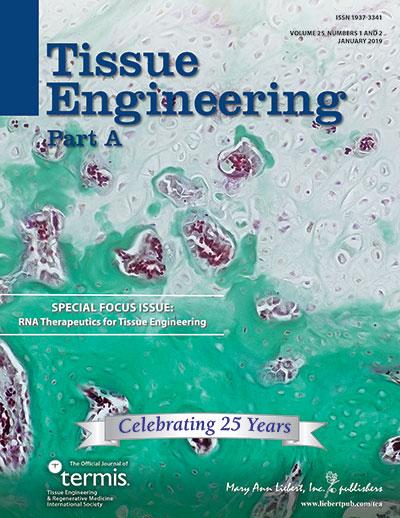
Credit: Mary Ann Liebert, Inc., publishers
New Rochelle, NY, January 30, 2019-For complex injuries and other situations requiring bone grafts, the best available technique involves autologous bone harvesting and re-implantation at the site of regrowth. However, because this process is invasive and limited by a finite supply of suitable donor material, synthetic graft-extending material is desired. In a new article published in Tissue Engineering, a peer-reviewed journal from Mary Ann Liebert, Inc., publishers, researchers report the first use of poly(thioketal urethane) (PTKUR) as an autologous graft extender in the technically demanding intertransverse process regeneration rabbit model. Click here to read the article free on the Tissue Engineering website until March 1, 2019.
Scott Guelcher, PhD, from the Departments of Biomedical Engineering and Chemical and Biomolecular Engineering, Vanderbilt, Nashville, TN, working in concert with colleagues from Vanderbilt and the U.S. Army Institute of Surgical Research, Houston, TX, present their work in an article titled (“Poly(Thioketal Urethane) Autograft Extenders in an Intertransverse Process Model of Bone Formation”. The research team shows that PTKUR provides strength comparable to bone with handling properties similar to bone cements. Most importantly, PTKUR enabled an ~50% reduction of autograft material without significantly compromising bone healing in this challenging model.
“This paper presents a valuable new biomaterial-based autograft extender that can be used to treat critical-sized bone defects that may not heal with bone cements or void fillers alone,” says Tissue Engineering Co-Editor-in-Chief John P. Fisher, PhD, Fischell Family Distinguished Professor & Department Chair, and Director of the NIH Center for Engineering Complex Tissues at the University of Maryland. “Such an advancement may have dramatic positive effects on current treatments to support bone healing.”
###
About the Journal
Tissue Engineering is an authoritative peer-reviewed journal published monthly online and in print in three parts: Part A, the flagship journal published 24 times per year; Part B: Reviews, published bimonthly, and Part C: Methods, published 12 times per year. Led by Co-Editors-in-Chief Antonios G. Mikos, PhD, Louis Calder Professor at Rice University, Houston, TX, and John P. Fisher, PhD, Fischell Family Distinguished Professor & Department Chair, and Director of the NIH Center for Engineering Complex Tissues at the University of Maryland, the Journal brings together scientific and medical experts in the fields of biomedical engineering, material science, molecular and cellular biology, and genetic engineering. Leadership of Tissue Engineering Parts B (Reviews) and Part C (Methods) is provided by Katja Schenke-Layland, PhD, Eberhard Karls University, Tübingen, Heungsoo Shin, PhD, Hanyang University; and John A. Jansen, DDS, PhD, Radboud University, and Xiumei Wang, PhD, Tsinghua University respectively. Tissue Engineering is the official journal of the Tissue Engineering & Regenerative Medicine International Society (TERMIS). Complete tables of content and a sample issue may be viewed on the Tissue Engineering website.
About the Publisher
Mary Ann Liebert, Inc., publishers is a privately held, fully integrated media company known for establishing authoritative peer-reviewed journals in many promising areas of science and biomedical research, including Stem Cells and Development, Human Gene Therapy, and Advances in Wound Care. Its biotechnology trade magazine, GEN (Genetic Engineering & Biotechnology News), was the first in its field and is today the industry’s most widely read publication worldwide. A complete list of the firm’s 80 journals, books, and newsmagazines is available on the Mary Ann Liebert, Inc., publishers website.
Media Contact
Kathryn Ryan
[email protected]
914-740-2250
Original Source
https:/
Related Journal Article
http://dx.




